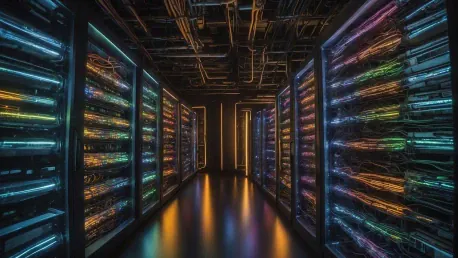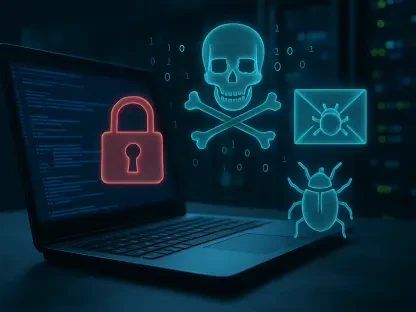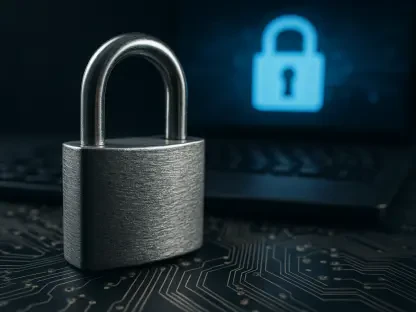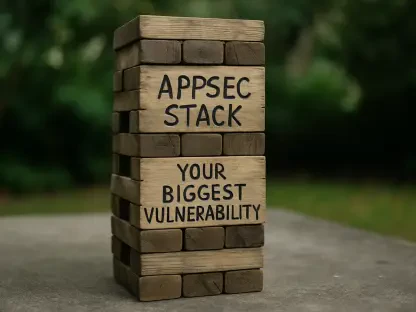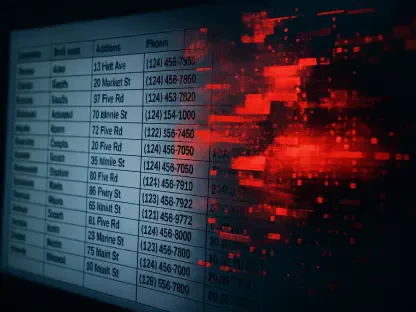In a recent call to action, the cybersecurity firm Trend Micro has strongly advised developers and organizations to enhance the security and monitoring of their Docker remote API servers due to a surge in attacks by malicious actors. These attacks aim to compromise these systems to deploy Linux-based malware and cryptocurrency miners. The urgency of securing these servers is highlighted in two comprehensive reports from the firm, revealing the increasing complexity and scope of these attacks.
The Problem: Vulnerable Docker Remote API Servers
Docker remote API servers have become a critical target for cybercriminals. The convenience offered by remote API servers, granting developers the ability to manage containers and other resources remotely, unfortunately, introduces significant security vulnerabilities. When these servers are misconfigured or exposed to the internet, they are left susceptible to unauthorized access and exploitation by malicious actors.
Misconfiguration and Exposure Risks
The primary issue lies in the misconfiguration of Docker remote API servers. When these servers are not properly secured, they become easy targets for cybercriminals. Exposing these servers to the internet without adequate security measures can lead to unauthorized access, allowing attackers to exploit the system. This misconfiguration often stems from a lack of awareness or understanding of security best practices among developers. The default settings may leave critical ports open or employ weak authentication methods, both of which significantly increase the attack surface. Furthermore, the rapid pace of development cycles often prioritizes functionality and speed over security, leading to oversight in secure configuration.
Indeed, the risk is compounded when additional services and applications are deployed on these servers without thorough security vetting. Each added layer increases the complexity of the security landscape, making it harder to identify and mitigate vulnerabilities. Organizations, therefore, must adopt a robust security strategy that includes regular auditing of their system configurations. This proactive approach not only helps in identifying potential weak points but also ensures that security measures evolve with emerging threats.
Unauthorized Access and Exploitation
Once cybercriminals gain access to a vulnerable Docker remote API server, they can deploy malicious containers that mimic legitimate ones. These containers, often configured to run in privileged mode, can interact with all processes on the host system, facilitating a range of malicious activities. The privileged mode grants attackers extensive control, allowing them to execute commands with high-level permissions, thereby compromising the integrity of the entire system. This access can lead to data breaches, unauthorized resource usage, and the spread of malware within the network.
Moreover, these malicious containers can be programmed to disguise their activity, making detection difficult. They can monitor and kill processes that attempt to investigate their operations, thus maintaining a persistent foothold in the system. This not only enhances the damage potential but also increases the operational costs for the affected organization, which must devote resources to detecting and removing the intrusion. Therefore, it is crucial for organizations to implement strong access controls and continuous monitoring systems to detect and respond to unauthorized access swiftly.
Types of Attacks: Perfctl Malware and SRBMiner Crypto Mining
Trend Micro identified two primary types of attacks exploiting Docker remote API servers. The first involves the perfctl malware, a persistent backdoor malware that facilitates cryptojacking and proxyjacking. The second type of attack involves the deployment of SRBMiner to mine XRP cryptocurrency.
Perfctl Malware: Cryptojacking and Proxyjacking
Perfctl malware is designed to exploit system resources for cryptojacking, the unauthorized use of a system’s resources to mine for cryptocurrencies. Additionally, it enables proxyjacking, where hackers use stolen compute resources and bandwidth for malicious activities. This malware employs several techniques to evade detection, such as checking for similar processes and creating directories to download files. Perfctl malware’s deployment typically begins with the exploitation of vulnerable Docker remote API servers, where it can install itself and hide within the system.
Once installed, perfctl malware modifies critical system configurations and settings to ensure it remains undetected and can restart even if the system reboots. It then begins to divert system resources towards cryptomining operations, significantly slowing down legitimate processes and potentially causing system instability. Furthermore, the malware’s ability to use proxyjacking techniques exacerbates the problem by redirecting network traffic through the compromised system, which can mask the attackers’ presence and actions from network monitoring tools.
SRBMiner: Cryptocurrency Mining Exploits
In parallel, Trend Micro detailed attacks leveraging Docker remote API servers to deploy the SRBMiner cryptocurrency miner. The attackers utilized the gRPC protocol over ##c (HTTP/2 over TCP) to bypass security measures and perform cryptomining operations on the Docker host. This strategy underscores the significant risks posed by the misuse of remote API servers. The attackers’ selection of the gRPC protocol for communication with SRBMiner is particularly noteworthy, as it enables efficient and concealed data exchange, further complicating detection efforts.
SRBMiner, once deployed, can operate simultaneously with other legitimate processes, effectively hijacking system resources for mining operations without immediately triggering alarms. This dual-use operation not only depletes system performance but can also increase operational costs due to higher power consumption and potential hardware degradation. The cumulative effect of such exploits can be severe, reducing the availability of computational resources for legitimate business purposes and potentially leading to financial losses. Organizations must, therefore, adopt stringent measures to monitor and secure their Docker environments against such sophisticated attacks.
The Attack Sequence: Probing and Deploying Malicious Containers
In the initial stage of the attack, cybercriminals scan for vulnerable Docker remote API servers. Once identified, they create Docker containers mimicking legitimate ones, configured to run in a privileged mode. This setup allows the container’s processes to interact with all processes running on the host system as if they were native to it.
Initial Probing and Container Creation
Cybercriminals begin by scanning the internet for exposed Docker remote API servers. Once a vulnerable server is identified, they proceed to create Docker containers that appear legitimate but are configured to run in privileged mode. This high-level access facilitates malicious activities. The act of scanning involves using automated tools that can quickly identify misconfigured servers by probing open ports and attempting to gain unauthorized access using default credentials or known vulnerabilities. Once the attacker confirms access, they immediately begin deploying the malicious containers.
The creation and deployment of these containers are often automated to ensure rapid execution. By mimicking legitimate containers, attackers can blend their activities with normal operations, making it harder for administrators to detect anomalies. The privileged mode allows these containers to wield extensive control over the host system, including modifying system files, accessing sensitive data, and deploying additional malicious payloads. This makes swift detection and response critical in containing the breach and preventing extensive damage.
Execution and Payload Deployment
The execution of the attack follows a two-part payload method via the Docker Exec API. The first part attempts to escape the Docker container, while the second is a Base64 encoded shell script designed to prevent duplicate processes and accomplish various malicious tasks. This method allows attackers to maintain persistence and evade detection. The initial escape from the container environment is crucial, as it allows the malicious processes to operate with the same privileges as the host, bypassing the isolation that containers typically provide.
Once the container escape is successful, the Base64 encoded shell script becomes active, performing a series of tasks designed to solidify the malware’s presence. These tasks can include altering system logs to erase traces of the initial breach, disabling security features that could expose the attack, and ensuring that even if one malicious process is terminated, another can take its place seamlessly. Such sophisticated payloads demand equally sophisticated defense mechanisms, which necessitate continuous monitoring, regular system audits, and prompt application of security patches to mitigate vulnerabilities before they can be exploited.
Consensus Viewpoints and Recommendations
Experts and researchers consistently underline the necessity of securing Docker remote API servers to prevent such attacks. A key piece of advice is to disable the remote API feature if it’s not essential. Enabling this feature should be carefully considered and, if required, strong authentication and authorization mechanisms need to be implemented.
Disabling Remote API and Implementing Strong Authentication
Disabling the remote API feature when not in use is a crucial step in reducing the attack surface. If the feature is necessary, implementing strong authentication and authorization mechanisms ensures that only valid users with appropriate permissions can access and manage Docker containers. By enforcing multi-factor authentication (MFA), organizations add an additional layer of security that can deter unauthorized access attempts.
Moreover, network-based restrictions, such as IP whitelisting, can further limit access to only trusted sources, reducing the likelihood of exposure to potential threats. Regularly updating authentication protocols and keeping abreast of the latest security developments are also essential practices. Leveraging tools that support role-based access control (RBAC) provides granular access management, ensuring users have access only to resources necessary for their roles, thereby minimizing the risk of privilege abuse.
Robust Logging and Monitoring
Moreover, logging and monitoring should be robust, allowing administrators to track the creation and use of new containers. This preventive action can mitigate risks associated with leaked credentials, ensuring only authorized activities are performed on the servers. Implementing comprehensive logging mechanisms enables real-time tracking of all activities within the Docker environment, capturing detailed records that can be invaluable during forensic investigations.
Automated monitoring solutions equipped with anomaly detection capabilities can instantly flag suspicious activities, triggering alerts that prompt immediate action. Utilizing these tools in tandem with regular manual audits ensures a proactive security posture. Maintaining logs also aids in compliance with regulatory requirements, providing a transparent operational footprint that demonstrates adherence to best security practices. Regular review and analysis of logs help in refining security policies and adapting to evolving threat landscapes, ensuring continuous improvement in defense mechanisms.
Detailed Recommendations from Trend Micro
To bolster security against these threats, Trend Micro researchers advocate for several specific measures. These include implementing strong access controls and authentication, regular monitoring, avoiding privileged mode, reviewing container images and configurations, performing security audits, and disabling the remote API when not in use.
Strong Access Controls and Regular Monitoring
Implementing robust access controls and adopting stringent authentication mechanisms are essential to ensure only authorized personnel can access and manage Docker remote API servers. Continuous monitoring of the remote API servers for any unusual activities or unauthorized access attempts allows for prompt detection and response to potential security breaches. This approach not only safeguards against external threats but also mitigates the risk of internal misuse or configuration errors.
Regularly updating and rotating credentials, alongside enforcing strict password policies, further strengthens security. Additionally, integrating advanced monitoring solutions that employ machine learning can enhance the ability to detect and respond to emerging threats by recognizing patterns indicative of malicious behavior. This proactive stance enables organizations to address security incidents before they escalate, minimizing potential damage and ensuring operational continuity.
Avoiding Privileged Mode and Review Container Images and Configurations
Refraining from deploying containers with root privileges or privileged modes is critical as these provide extensive access, facilitating potential exploits. Thoroughly reviewing container images and configurations before deployment can eliminate potential security risks. This practice ensures that only verified and secure images are used, reducing the chances of inadvertently introducing vulnerabilities into the production environment. Conducting regular vulnerability scans on these images and configurations helps in identifying and mitigating security loopholes promptly.
Utilizing tools that support image signing can verify the integrity and authenticity of container images, ensuring they have not been tampered with. Additionally, maintaining an updated registry of trusted images and enforcing policies that restrict the use of unapproved containers further secures the Docker environment. By continuously assessing and refining these security measures, organizations can stay ahead of potential threats and maintain a secure operational landscape.
Concluding Remarks
In a recent urgent call to action, the cybersecurity firm Trend Micro has issued a strong recommendation for developers and organizations to strengthen the security and monitoring of their Docker remote API servers. The company’s warning comes in response to a notable increase in cyberattacks from malicious actors targeting these systems. The primary goal of these attacks is to compromise the servers and use them to deploy Linux-based malware and cryptocurrency miners, posing significant threats to the integrity and functionality of the affected systems. Trend Micro’s alert is underscored by two detailed reports that shed light on the escalating complexity and scale of these attack operations. The purpose of these reports is to raise awareness among developers and organizations about the severe risks and the pressing need for improved security measures. According to the reports, the attacks are becoming more sophisticated and pervasive, making it crucial for stakeholders to be proactive in safeguarding their Docker environments. By doing so, they can better protect themselves from these evolving threats and ensure their systems remain secure.
